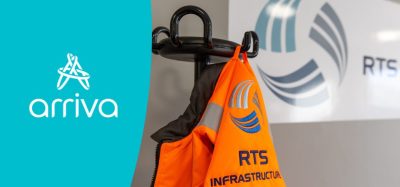“A call to arms”: how many women work in transport?
Posted: 10 April 2024 | Emily Budgen | No comments yet
Women in Transport have published their groundbreaking survey on women in the industry and the reforms the sector must undertake.


The Women in Transport survey has produced some revealing statistics on the number of women in the transport industry.
Even though it has been acknowledged for some time that women in the transport and rail sector are mostly a minority, WIT’s report, undertaken by WORK180, lays bare the gender disparity in the sector.
68 transport organisations took part in the survey, as well as 4 organisations from WORK180’s database. Most of the companies registered were SMEs, often with under 250 employees.
While creating the database for the survey, WIT reported that they received several emails and phone calls from organisations, explicitly expressing their reluctance to participate in the research, reporting that some feared that they would be benchmarked.
Sue Terpilowski, OBE Project Lead for the Equity Index, commented: “The Women in Transport Equity Index exposes the uncomfortable truths the industry is facing. It’s not just a report; it’s a call to arms. We cannot allow gender inequality to persist in a sector pivotal to our nation’s growth and economy.”
This is where the number crunching starts. Only 22.80% of employees in the rail industry identify as women, and 52.40% of those individuals work in non-transport roles, such as HR, admin, marketing, and finance.
In addition, 58% of organisations admit to an 11% or more gender pay gap, and 54% lack any kind of formal targets or schemes to rectify the gender imbalance.
While 59% offer no support to primary carers, including paid parental leave, on a more positive note, 94% of organisations are open to flexible working.
Ruth Cadbury MP, Chair of the All-Party Parliamentary Group for Women in Transport, said: “It’s fair to say that the Transport sector has a very male-dominated workforce, and that needs to change both for those working in the sector and those who use it. The Equity Index is an important tool in that journey, as we will only know success if we can measure it. I therefore welcome the launch of this report and its recommendations.”
What are the next steps to improve this situation?
Women in Transport released a list of recommendations, for ‘immediate action’:
- ‘Conduct regular reviews of the gender pay gap within your organisation and develop a meaningful and deliverable action plan.’
- A possible example of how this could aid numbers of women in the sector could be that with equal pay, women looking for a career in transport or rail might be more interested in the opportunities available, making them more likely to apply for such positions. More women could be actively applying for a career in rail.
- ‘Implement best practices for delivering internal promotions that mean there are more women in senior decision-making roles, with a particular focus on transport-related roles’
- With women in decision-making roles in the transport sector, a greater diversity of opinions would naturally be considered, ultimately leading to a product (MaaS) which would benefit more of the public.
- ‘Support sector-wide initiatives for cultivating and empowering women in leadership positions’
- ‘Review policies relating to parental leave’
- By creating a parent-friendly work environment, more employees are likely to stay in the position. Greater retention of talent would mean less money spent on training and advertising jobs. Make transport a sector for everyone, regardless of their stage of life.
- ‘Build upon good work in developing flexible working by working with women to ensure what you do reflects their needs and makes your organisation a better work place’
Sonya Byers, CEO of Women in Transport, said, “Our report is a wake-up call. The UK transport sector needs urgent and drastic changes to become a beacon of gender equity. It’s time for the sector to move beyond lip service and embrace transformative actions for a fair and inclusive future. This can only be achieved through cross-sector collaboration”.
The clear message that runs throughout the report is that the transport sector must take immediate action. By not having half of the population represented in the transport workforce, half of their views and perspectives are being ignored, hence the product will not appeal to half the population.
Click the link here to read the full report in pdf format.
More Like This
International Women’s Day: Wisdom from women in rail
OFF THE RAILS: Australian ONRSR’s Dr. Natalie Pelham
OFF THE RAILS: GBRTT’s Emily Lightowler
Stay Connected with Global Railway Review — Subscribe for Free!
Get exclusive access to the latest rail industry insights from Global Railway Review — all tailored to your interests.
✅ Expert-Led Webinars – Gain insights from global industry leaders
✅ Weekly News & Reports – Rail project updates, thought leadership, and exclusive interviews
✅ Partner Innovations – Discover cutting-edge rail technologies
✅ Print/Digital Magazine – Enjoy two in-depth issues per year, packed with expert content
Choose the updates that matter most to you. Sign up now to stay informed, inspired, and connected — all for free!
Thank you for being part of our community. Let’s keep shaping the future of rail together!







